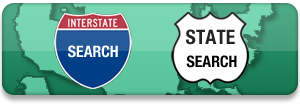We have been camping in a 1984 Westfalia camper van, and it is epic! That said, space is at a premium in a Westy, and older camper vans, while charming and Instagram-worthy, lack some of the creature comforts of bigger RVs. If you are living the van life, tent camping, or camping in a smaller van, pop-up trailer, or camper, the following must-have camping gear is, well, MUST HAVE.

Must have van life camping gear
Tough duffels for organization:
We love our new Patagonia Black Hole duffel, made of water-resistant 100 percent recycled material. They range from 40-100 liters, with or without wheels. For van life, we recommend wheel-less, because these duffels are easy to stack on top of one another, toss around, and set in the dirt. We use one for all our bedding in our van, which keeps us organized and keeps our pillows and blankets clean.

We also like our Big Agnes Big Joe, which comes in 45-110 liter sizing. This one stores our dog gear, their bedding, and their food.
Pick up the Black Hole for under $230 on Amazon.
Comfy bedding for plenty of zzzz’s:
Our Sierra Designs’ Frontcountry Duo bed is amazing. If you’re camping as a couple, this sleeping bag feels more like bedding, with a zipperless design and toe holes so you don’t overheat. It comes in a single option as well, and a backcountry version that’s rated to a lower temperature. We lay our Frontcountry Duo out along our bottom floor bed, which we convert from our passenger bench seat at night.

Pair the Frontcountry Duo with a Thermarest Vela Double Quilt on chilly nights. This zipperless sleeping bag/quilt stuffs down small when you don’t need it, repels dog hair beautifully, and is rated to 32 degrees.
Chairs that invite lingering:
One nice thing about van life is that you can bring along extra weight, since you won’t be carrying it far. We like to relax by the fire in style with our GCI Outdoor Pod Rocker chairs. We’ve set these chairs in creeks, on the edges of lakes in the sand, by the fire pit, on lawns in parks, and everywhere in-between. They’re heavy, but they pack down small, and they are rocking chairs!

GCI’s Spring-Action Rocking Technology allows for smooth rocking while you enjoy your time in the outdoors. There’s even a cup holder and a cell phone pocket.
Power that runs on solar:
If you plan to spend time off-the-grid with your camper van, you’ll want on-the-go power at your fingertips. We have the Jackery Portable Power Station 240, which we can pair with our Goal Zero solar panel to provide power for our camper lights, our phones, our laptops if we bring them, our InReach, and our music. The price of the Jackery depends on the power level you opt for, but can start as low as $99 and go into the thousands. Pick something that meets your needs in the outdoors with a little bit of wiggle room, just in case.

Bear in mind that you don’t HAVE to power the Jackery with a solar panel. You can charge it using a wall outlet before you leave home, as well. We do both!
A lantern that turns your van into a party (or a romantic evening):
BioLite AlpenGlow 250 is an LED camping lantern with so many light and color modes, it takes a bit of a tutorial to take advantage of them all! But once you know, you know, and you can toggle between a very bright LED light, a dimmed yellow light version, solid color lights, half a light (to save power) and a full-on color dance party. You get a USB cord included (we charge this lantern with our Jackery power bank) and the 250 lumen version is small enough to fit in our glove box (there’s also a 500 lumen version).

More must have van life camping gear:
An extra cargo box to bring all your toys:
We love our Thule Transporter Combi cargo box, which is hitch-mounted. Read our full review! We love the design because we don’t have to worry about loading and unloading a rooftop cargo box on our van, and we don’t have to worry about the extra weight on our pop-top. The Transporter Combi fits our grill, our charcoal, our portable toilet, our recycling, and more, so we don’t have to carry any of this inside the van when we travel.
Pillows that can take a beating:
Our Avocado mini green pillow travels in our van, serving many purposes. It’s great to prop myself up to read or work on my laptop on those travels when work comes along for the ride, and it’s small enough to not take up precious storage space. The size is also perfect for small kids and toddlers!
A high-quality auto tool kit:
We hope we’ll never need to use our car and van tool kit (or at least not often!) but having it brings peace of mind.
Reusable propane:
This is a game-changer. The Ignik Gas Growler allows us to refill with propane in a portable form, which saves tons of those green gas canisters from the landfill. Plus, the convenience and cost savings are significant! We use the gas growler to power our stove, but you can use it for anything you’d need propane for.
A truly long-lasting cooler (or two):
Yes, it’s worth it to buy a Yeti. Or a Pelican. Or any double-walled, highly insulated, hard-sided cooler. Our ice lasts for days, our drinks stay cold, and we aren’t afraid to bring food ingredients like raw meat, fresh veggies, and dairy, even though we don’t have any electric refrigeration. Yes, the hype is worth the money. We have a Yeti Tundra 45.
A hot shower (or cooling spray):
Our Helio Pressure Shower from Nemo Equipment doesn’t just offer the welcome chance of a warm shower (thanks to its solar heating capability). Because it’s pressurized, you get a strong sprayer that’s great for getting sand off your feet, hosing off muddy dogs, and even doing the dishes. It’s not a gravity-based solar shower, so you don’t need to find a tree to hang it from. Any sunny patch in your campsite will do!
Safe, portable water:
A Lifesaver Jerrycan will set you back, but you get peace of mind that extends far beyond camping season. Thanks to built-in filters, a Lifesaver is a portable water purifier capable of filtering 10,000 litres/2,650 US gallons of clean drinking water, removing viruses, bacteria, cysts and parasites. Its great for camping, for off-grid living, and for emergencies. We have ours always filled with water and stored in the garage in case of evacuation or loss of power and water.
Additional resources:
- Need power out in the wilds? Consider trying out portable solar generators for your next trip
- The solar living institute
- Reasons why solar power will just keep getting better































